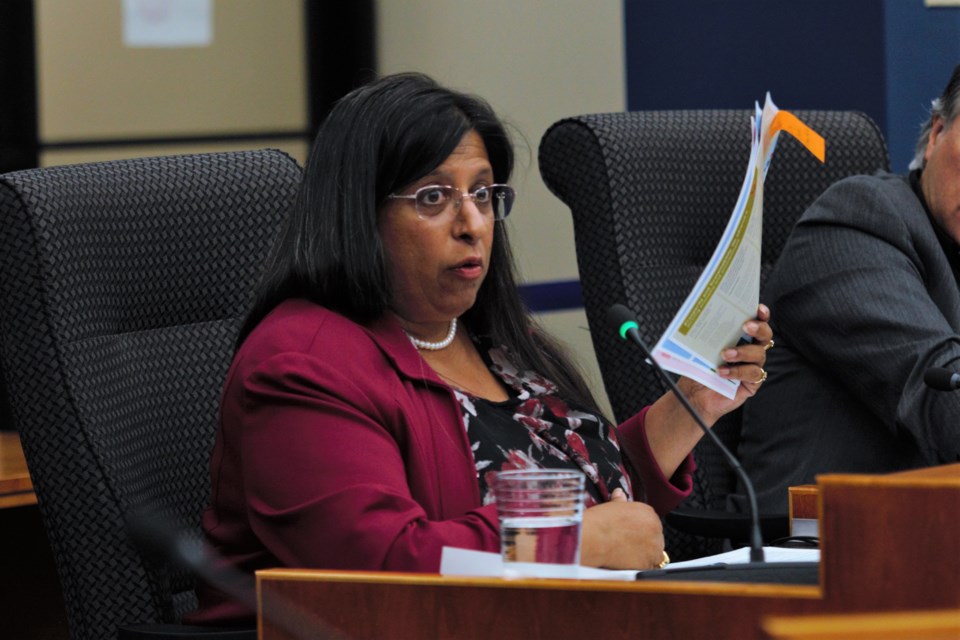THUNDER BAY — Thunder Bay’s city council has signalled its intention to focus on economic growth and housing, insisting on emphasizing those issues in the city’s new strategic plan before approving it this week.
The plan, meant to serve as a roadmap of top city priorities through 2027, was crafted by staff based on a series of private meetings involving council in recent months.
At a Monday meeting, however, some councillors complained the result — which emphasized issues including climate change and reconciliation — didn’t accurately reflect those discussions.
“It’s all fluffy, it’s nice, but at the end of the day, this isn’t what I thought we would get,” said Coun. Albert Aiello. “When I read this, I was taken aback, I’m not going to lie. I didn’t see any growth issues here. And that’s concerning to me, because I really believe that was the direction council shared with staff.”
Mayor Ken Boshcoff, citing the plan’s official release last week, questioned whether the document reflected council’s priorities, or those of staff.
“It was hard for us not to notice that there were no elected representatives there last week, it was all administrative,” he said. “So I’m wondering if this is an administrative plan, or is it an elected representatives’ plan?”
Coun. Rajni Agarwal agreed the plan failed to meaningfully address growth and development.
“The word mining does not exist in this document, but we talk about mining as being a very instrumental part of our growth,” she said.
Tracie Smith, the city’s director of strategic initiatives, said the plan did touch on economic growth and housing.
It featured objectives to “incentivize affordable and equitable mixed-use neighbourhoods that meet our community’s housing… needs,” and to “grow community wealth by prioritizing land use development in the urban intensification zone,” she noted.
Coun. Andrew Foulds said the plan already included “strong language” around economic growth, as well as the environment, social justice, reconciliation, and inclusion.
Some, like Coun. Brian Hamilton, argued issues of economic development are “not in [the city’s] wheelhouse” and better addressed by the Thunder Bay Community Economic Development Commission — an arms-length city agency.
Several other councillors disagreed, calling the plan a communications document that should immediately signal the municipal government’s commitment to economic development to citizens and business leaders alike.
A vote to approve the plan as presented appeared at one point to be headed for a close vote, prompting a warning from Coun. Mark Bentz.
"This is an important document," he said. "I'm very saddened to see a slim majority is what is going to pass [it]."
"When it comes to… strategic plans, 7-6 doesn’t cut it, in my view."
Council ultimately voted to add growth as a fourth “strategic pillar” in the plan, which was later adopted on a unanimous vote.
The growth pillar will include an objective of facilitating development of a variety of new housing types.
The other pillars, each of which comes with specific objectives, are truth and reconciliation, safety and well-being, and sustainability.
Highlights of the 31 objectives in the plan include:
- Advocate for provincial funding to recognize the city’s role as a regional hub
- Revise policies and procedures to enhance access and experiences for Indigenous residents
- Improve participation in municipal decision-making by historically marginalized people
- Support harm reduction by decriminalizing people who use drugs
- Invest in green and climate-resilient infrastructure
- Accelerate initiatives to reduce greenhouse gas emissions
Several councillors also expressed dissatisfaction over the small number of concrete metrics identified in the plan to measure success, and the fact most were tied to the city’s citizen satisfaction survey.
Councillors suggested adding metrics like housing starts, building permits issued, new businesses established, land available for development, and growth in the city’s tax base.
City manager Norm Gale responded that specific metrics were meant to be fleshed out in a subsequent action plan, suggesting that process shouldn’t come as a surprise to council members.
"We agreed to a process back in January... where our approach was going to be on high-level strategic items and was not going to be too detailed," he said. "This is not the end of the strategic plan… much more is coming to you, including action plans and details about measurement."
Staff will deliver progress reports on the plan to council yearly.
The document mentions no specific infrastructure projects, unlike the 2019-2022 plan, which named an indoor turf facility, waterfront trail, and new art gallery as priorities.
Hamilton called that approach into question.
“One of the things we’re doing over the next few years is enhancing recreation opportunities [and] assets, and that’s kind of lost,” he said, pointing to plans for an indoor turf facility and millions in spending to upgrade city parks.
“I want the community to see that is part of our plan, so when it looks like we’re maybe closing underutilized facilities, we’re actually expanding recreation opportunities elsewhere.”
A copy of the draft plan is available online, but does not yet include the changes approved by council Monday.
The city will open a survey to the public later this summer seeking feedback on what specific steps it should take to achieve the plan's goals.
While previous strategic plans have expired at the end of each four-year term of city council, this one will remain in effect through the end of 2027, just over a year after a new council is elected.
That will avoid a gap where no strategic plan is in place and give the incoming council more time to settle on priorities, staff said.
“I’m really happy to see that,” said Coun. Kasey Etreni. “I think it’s really important for a new council to have an opportunity to get their feet wet before they’re looking at a strategic plan.”
Coun. Michael Zussino argued the city should consider planning even further ahead, noting other cities like Sudbury develop 10-year plans.
